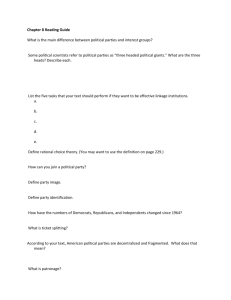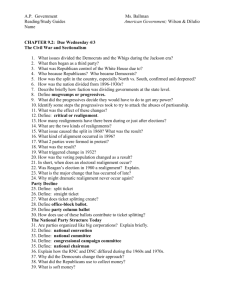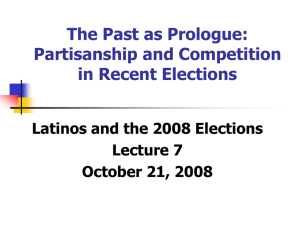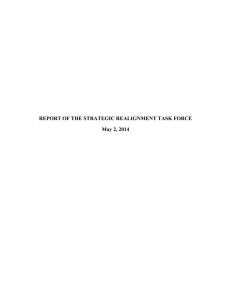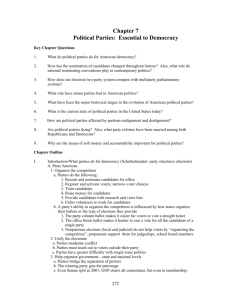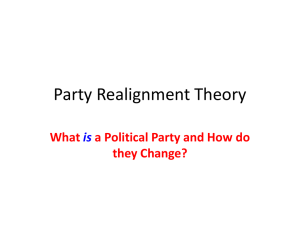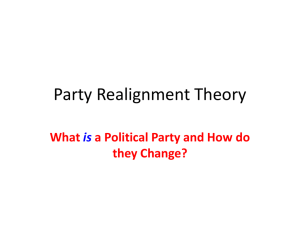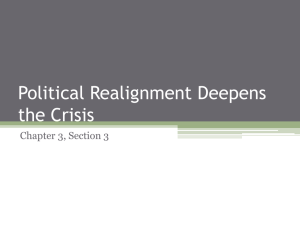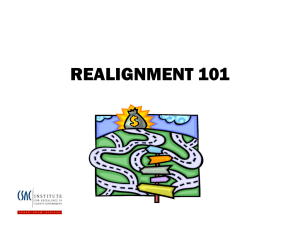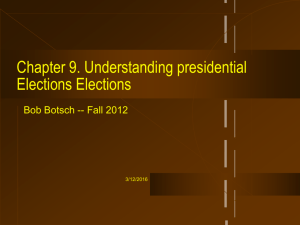Lecture 12
advertisement
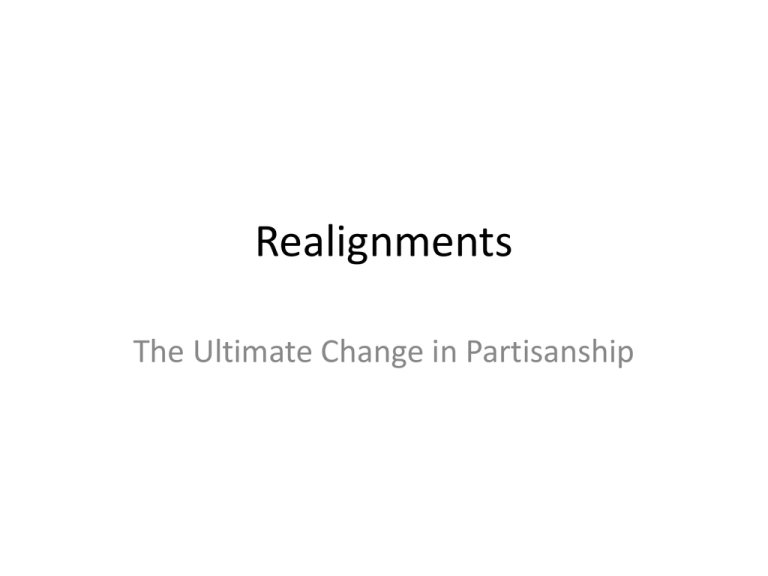
Realignments The Ultimate Change in Partisanship Two-Party System in American History We often Switch Party Loyalty • Congressional Elections • Weaker partisan ties • Poor challengers • These can result in a landslide for one party How To Wreck a Party REALIGNMENTS How to Wreck a Movie • First, how to wreck a movie • Strange Brew 1983 What is a Realignment • A Durable shift in voting Patterns • The New Party Kills the Old • Majority Parties become minorities Who Switches in a Realignment • Hard Cores do not switch • Independents do • New Voters • Weak partisans become strong Partisans What Causes a Realignment • Economic or social crisis • Failure of the party to interpret change • A changed electorate The Policy Implications • A mandate for change • Major New Policies • Continued success Options for the Losers • Ignore the issue • Try to absorb it • Change Good Times A THEORY OF CRITICAL ELECTIONS Kinds of Realignments • Secular Realignments- happen over time • Regional Realignments • Critical Elections Types of Election Majority Party VICTORY same change Maintaining Converting Defeat Deviating Realigning A Realigning Election • The Actual Critical Election – 1860 – 1896 – 1930 • High Intensity • High Turnout A Maintaining Election • A boring election • The party in power remains in power • 1936, 1940, 1944, 1948, 1960 Deviating Election • The Out party does well • No shift in long term partisanship • Caused by short-term factors • 1912, 1916, 1952, 1956 Converting Election • The out party is gaining seats • The precursor to a realignment • The majority party keeps control. The New Deal THE LAST REALIGNMENT The New Deal Realignment • The GOP was the majority party from 18961932 • The Democrats Replaced the GOP and kept effective power from 1932-1968 How FDR Did it • Kept the South • Inroads into the North • Urban Party – Catholics – Poor – Unions Policy differences • Focused on Domestic Economic Issues • Expansion of Government • Clear Policy differences between the parties • The GOP could not adopt this message or expand its base The End of the New Deal • Problems are solved • New Issues Emerge • The Electorate Changes How it Happens • New Deal Democrats Die • Catholics become assimilated economically • New voters are less partisan • Conflict between working class and African Americans The real end of the new deal realignment THE CASE OF THE SOUTH The South in historical context • Solidly Democratic from 1870- 1968 • The key to Democratic strength because of opportunity costs • The shift of the South to the GOP marks the end of the New Deal Realignment How the South Shifted • First in Presidential elections (1948, 1964, 1968) • Then State-wide offices • Southern Democrats Die and are replaced by Republicans Why the South Shifted • Race • Economics • Demographics THE CURRENT PARTY ALIGNMENT The Parties have been Competitive Republicans • President- 72, 80, 84, 88 2000, 2004 (24 years) Democrats • President- 76, 92, 96, 2008 (16 years) • Senate- 1981-1986, 19952006 (18 years) • Senate- 1973-1980, 19891994, 2007-2013 (20 years) • House- 1995-2006, 20112013- 14 years • House- 1972-1994, 20072010 (26 years) Dealignment • A weakening of partisan ties • Partisans, however, have become more extreme (as has congress) • A new realignment would require the conversion of independents

